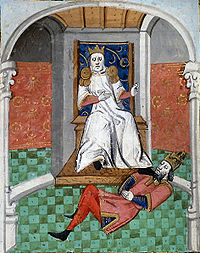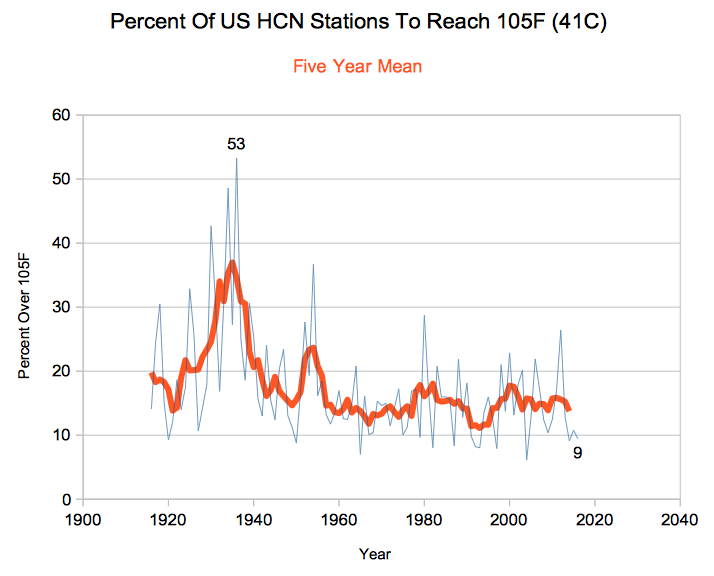Back in March and April, TOF began a series on the Crusades, but shortly after
a wasp broke his humerus. This has distracted him since from any but trifles. It is now time to resume the narrative.
Hmm. His list of pending blog posts includes also
America's Next Top Model and
In Psearch of Psyche, both of which have fallen into a black hole. In fact, there may be other series of which I have entirely forgotten. Time to shrug into motion, sez I.
In Deus Vult! Part I, we reviewed in the form of a chronology four hundred years of muslim aggression against Christendom, a region known to the muslims by the subtly suggestive name "House of War." Technically, India, China, and sub-Saharan Africa also live in this house, but at this point in history, most of the action is in the West. India is pending on their to-do list, and China has been kicked out of Afghanistan.¹ Africa will have to wait because there is nothing there that the muslims want, except slaves.
In Deus Vult! Part II, we encountered the Standard Model of the Crusades as an unprovoked incursion by boorish oafs (as well as oafish boors) into the suave and sophisticated House of Submission. This model was constructed by Marxist historians and their camp followers, who were writing in the twilight of the Age of Imperialism, and consequently, in that marvelous way we have of seeing ourselves wherever we look, saw the Crusades as an earlier version of the Age of Imperialism. No one thought to ask how all those muslims got all over everywhere in the first place.² Could be the Crusades were an anti-imperialist movement! What is the statute of limitations on conquest?
Notes:
1. Afghanistan. One of the reasons the Islamists keep blowing up antiquities from Buddha statues to Palmyra to Cyrene is that they don't like reminders that Others had been there before them and built great works. The Wahhabis have scoured the Peninsula of any trace of the Turkish occupation, or indeed of early Islam itself.
2. in the first place. For example, TOF recently watched a series on the Old West that involved in part the obnoxious taking by the whites of the Black Hills from the Lakota. Was there any mention that the Lakota had previously taken them from the Cheyenne? Or the Cheyenne from the Arapaho? Even to ask the question is to answer it.
On Your Mark
IN THE STANDARD MODEL, the crusaders were imagined as second sons with no inheritance, as robber barons, as highwaymen, or as others with nothing to lose out to get rich on the fabled wealth of the Orient. More recently, historians have started to look at the surviving data (such a marvelous thought!) and have found that this was not the case.
The pilgrimage to the East was self-funded, for one thing. No one was paying the knight's plane tickets. In fact, there were no planes!³ So everyone had to get there on his or her⁴ own.
Notes
3. no planes. On a positive note, this meant no one could hijack them or fly them into the Hagia Sophia. Well, not until 1204, anyway.
4. her. You
heard me. Of the 150,000 people who took the pledge, the majority were
women, the poor, and the elderly. These were asked to stay at home and
pray for success. They would get in the way of the more muscular pilgrims. Spaniards were also asked to stay home. They had their own crusade to attend to. But by the somewhat
libertarian nature of medieval society, no one other than a sworn lord could outright forbid
anyone from engaging in pilgrimage and many went anyhow. Some of the
lords brought their wives and families.
 |
| Whoa! Out of my way, pilgrim! |
Crusading was expensive, up to five times one's annual incomes. (Louis IX’s Seventh Crusade⁵ in the mid-thirteenth century will cost more than six times the annual revenue of the Crown.) To cover the nut, knights and lords sold freeholds, settled property disputes at a disadvantage, liquidated estates, borrowed from relatives, submitted grant proposals, and maxed out their credit cards. This was so extensive that preparations for the First Crusade introduced considerable inflation into Western Europe⁶ and instigated a net flow of wealth from West to East. (So much for getting rich on the wealth of the East.) One of the reasons why the Fourth Crusade will get hijacked to Constantinople was that it will run out of money
before it even gets rolling.
They sold off their wealth with no expectation of an ROI. (In fact, except for maybe a few stray Lombards, they may not have known what an ROI was! There was not a single MBA in all Europe. Which may explain their prosperity.)
Yes, prosperity. They had to raise that money from somewhere. Global warming was in full swing, lengthening the growing season, expanding the arable land, increasing the harvests. Had Europe been poor, she could not have afforded these expeditions.
Only about 40,000 of this total actually marched east. They did not all go together, and many did not complete the journey but turned back when their funding dried up. It was not an organized expeditionary force. It was 40,000 knightly or lordly dudes and their dependents all going in the same general direction for more or less the same purpose at approximately the same time.
That purpose was to make pilgrimage to the Sepulcher in Jerusalem, and the time was 15 Aug 1096. That's right, sports fans! This is the 920th anniversary of the kick-off to the First Crusade. Woo-hoo!
Notes
5. Louis IX’s Seventh Crusade. I wish we could have had Louis VII's Ninth Crusade, too, but the math doesn't work out.
6. considerable inflation. Later crusaders will take this into account and begin saving up for the journey years ahead of time, a sort of medieval layaway plan.
 |
| Don't call me Shirley! |
PILGRIMAGE? The Marxist historians of yore could not credit such a thing. Since neither they themselves nor their camp followers believed in religion, they could not believe that others actually did. It must be social cover, it must be hypocrisy. Surely, they could not have been serious! Perhaps they did not believe that rough and tumble warriors could also be pilgrims.⁷
But they were. That the expedition was a cynical exercise in
Realpolitik is a Modern illusion suffered by those who see their own beliefs fortuitously reflected in the past. Oh, surely among 40,000 warriors and their dependents there were some cynics and hypocrites, there were some looking to get rich, just as there are in today's NGOs. But remember, no one
ordered them to go, they were not
sent, they did not belong to an
army. They each took a pledge
individually to make the journey. The pledge was to God, not a king or baron. They were not even volunteers in the sense of the "All-Volunteer Force," because they were not joining an organization. They were all free agents, not team players.
In fact, they saw themselves as bound on an errand of mercy. The crusade was to be an exercise in charity (Riley-Smith, 1980). The muslims had taken the lands of Christ: his birthplace, his tomb, Antioch (where his followers were first called Christians), the homeland of the Cappadocian fathers, the patriarchate of Alexandria (second only to Rome in honor), the sites of three of the first four Councils. And it was the duty of every sworn vassal to recover the lands of his lord from the enemy. In this case, they had sworn fealty to Jesus. The lord was the Lord, and they were off to reclaim His lands.
Notes
7. warriors/pilgrims. When this was bruited recently in a comm box elsewhere, a correspondent took umbrage and claimed that calling them pilgrims made them seem harmless. Another example of modern picture-book understanding replacing actual historical context. Presumably, she was envisioning the Wife of Bath and others wending their jolly way to Canterbury in a well-groomed England rather than in a war-torn and chaotic Middle East.
IF PARTICIPATION WAS VOLUNTARY, knights had to be persuaded to go. This was done mainly through the crusade sermon, so we
might expect these sermons to be full of enticing promises, rose-colored visions, and all the rest of the Late Modern panoply of PR and advertising.
They were not.
For the most part, crusade sermons were full of warnings that crusading brought
deprivation, suffering, and often death. Many, if not most crusaders left expecting not to return.⁸ The casualty rate for the First Crusade
has been estimated at 75%. This reality was well known anyway, and the potential recruiting pool would not have believed a more rosy picture. Jonathan Riley-Smith noted that
crusade preachers “had to persuade their listeners to commit themselves
to enterprises that would disrupt their lives, possibly impoverish and
even kill or maim them, and inconvenience their families, the support of
which they would . . . need if they were to fulfill their promises.”
When the grandfather of TOF was in the cadet corps at Catholic University in 1918, he was discouraged from majoring in philosophy and letters, which he desired above all else, and talked into enrolling in mechanical engineering. The enticement was "you'll get to see action sooner!" That action was the meatgrinder of the trenches of the Western Front. For that matter, there was the French Foreign Legion: "You are in the Legion to die and we will send you where you can die."
This enticing appeal --
You will probably die! -- worked precisely because the crusade was seen as a penitential act. Undertaking known and significant hardships with the right motives was understood as an acceptable
penance for sin. "Far from being a materialistic enterprise, crusading
was impractical in worldly terms, but valuable for one’s soul. There is
no space here to explore the doctrine of penance as it developed in the
late antique and medieval worlds, but suffice it to say that the willing
acceptance of difficulty and suffering was viewed as a useful way to
purify one’s soul (and still is, in Catholic doctrine today). Crusading
was the near-supreme example of such difficult suffering, and so was an
ideal and very thorough-going penance." (Crawford, 2011)
For Christians .
. . sacred violence, cannot be proposed on any grounds save that of
love, ... [and] in an age dominated by the theology of merit this
explains why participation in crusades was believed to be meritorious,
why the expeditions were seen as penitential acts that could gain
indulgences, and why death in battle was regarded as martyrdom. ... As
manifestations of Christian love, the crusades were as much the products
of the renewed spirituality of the central Middle Ages, with its
concern for living the vita apostolica and expressing Christian ideals
in active works of charity, as were the new hospitals, the pastoral work
of the Augustinians and Premonstratensians and the service of the
friars. The charity of St. Francis may now appeal to us more than that
of the crusaders, but both sprang from the same roots.
"Crusading as an Act of Love," Jonathan Riley-Smith, History 65 (1980):177–92
Notes:
8. expecting not to return. Robert of Crésèques, a 13th-century crusader announced that he had “come from
across the sea in order to die for God in the Holy Land” -- and promptly did so, in battle against overwhelming odds
Get Set
Around AD 968, the Byzantine Empire went over on the offensive, recovered Crete (961) and Cyprus (965), and advancing into northern Syria recovered Antioch (969) and the nearer parts of Armenia from the Caliphate.
In that same year, the Shi'ite Fatimids had moved from their original base in the Maghreb and seized control of Egypt,⁹ building Cairo to celebrate and by the way sucking all the oxygen out of the room for Alexandria, whose long era of prosperity now drew to a close. The Fatimids declared themselves Caliphs as the Sunni Umayyads in Spain had already done.
Just in time, too. It was a buyers market in caliphs. The Buyid princes from northwest Iran had been gradually making themselves masters of the plateau and had extended their control into 'Iraq, where they stripped the 'Abbasid caliph of his temporal authority. They still recognized his spiritual authority. Beyond Buyid reach, the western parts of the old Caliphate either fell into Fatimid hands or become independent Arab or Kurdish emirates.
As a result, the Holy Land fell into chaos with three-way fighting between Egypt, Mosul, and Aleppo as well as the occasional Bedouin raiders from the desert. Pilgrims found themselves molested as they had not been by the 'Abbasid caliphs.
Meanwhile, the Buyids began glancing nervously over their shoulders as the Turks, scandalized by Shi'ite control over Sunni populations, moved west. For uncounted centuries, they had been herders of cattle. Now they
would become herders of men.
Note:
9. Moved from their original base. Outside of Europe there were no nation states. Egypt had a certain self-consciousness and so did Persia, but for the most part, ruling dynasties could move around and establish themselves elsewhere. Imagine if the Windsors of England could pull up stakes and make themselves kings and queens of Poland. Instead of talking of the Kingdom of England, we'd talked about the Windsor Kingdom.
The middle of the 11th century was one of upheaval in the Middle East. The Nine Tribes of Turkestan (the Toghuz Oghuz, or "Ghuzz") poured west. One stream, the Cumans, flowed north of the Caspian into the Ukraine, where they drove the earlier Patzinaks into Romania. But the southern stream, who became the Saljūq Turks took control of Khorasan (1037) and smashed their former employers the Ghaznavids (1040). This attracted other Ghuzzers to their banner and they conquered the Buyids bit by bit until they took Baghdad (1055), after which they picked up Mosul, Aleppo, the Kurds, and the Caucasus. Their plan at this point was to advance against the heretics ruling Egypt -- the irony is that the people
of Egypt were still largely Christian, at least 50% by some estimates -- but their Sultan, Alp Arslan started to tidy up his borders first. By the late 1050s, the Turks were raiding deep into Armenia, by 1060 into Cilicia.
Side note: Population pressure had squeezed two tribes out of Arabia: the Beni Hilal and the Beni Sulaym. The Fatimids had convinced them to abide in Upper Egypt and then, when their Zirid governors back in North Africa rejected the Shi'a, sent them into Cyrenaica and Tripolitania, where they kicked Zirid butt and converted the two regions -- now called "Libya" -- from Berber to Arab. However, whenever Libya is stressed, it tends to fracture into these two parts: Hilal in the west and Sulaym in the east.
The other big move was by the Sanhaja Berbers, ancestors of the Tuaregs, who came out of the desert, conquered Morocco (to which they gave its name) and began to intervene in the Spanish cockpit.
 |
Alp Arslan humiliating the
Byzantine emperor |
Romanus IV Diogenes could let the Normans have Sicily, but Armenia was the key to Anatolia and had to be defended. He gathered the main Byzantine army and began pushing east into Armenia.
Alp Arslan, who had already turned toward Egypt, became alarmed about his lines of communication and did a 180. The two armies met at Manzikert on the shores of Lake Van, where Turkish horse-bow tactics ran the Byzantines ragged until the army disintegrated and
the emperor was captured.
Short-sighted Greek generals competing for power hire Turkish mercenaries -- who turn on them and open the frontier for Turkoman herders to drive their flocks and herds into Anatolia.A palace coup overthrows Romanus and installs the Doukas family, who make a mess of things. Finally,
Alexios I Komnenos takes control and steadies things up. He sends out peasant armies who take control of the coastlands of Anatolia
1095. Emperor Alexios I Komnenos writes to the pope for help.
 | | | |
| The Arabs (wide cross-hatches) are out of the picture, although Second Wave Arabs have colonized Libya and interior Algeria flipping it from Berber to Arsb. The Berbers
(tight mesh) rule in Spain and Morocco, the Algerian-Tunisian coast, and have set up a rival Caliph in Egypt. The Turks
(border of open circles) have taken over Persia, Anatolia and are trading
Syria/Palestine back and forth with the Fatimids. |
Go!
When already that time drew nigh, to which the Lord Jesus
draws the attention of his people every day, especially in
the Gospel in which he says, “If any man will come after me, let
him deny himself and take up his cross and follow me”, there was
a great stirring throughout the whole region of Gaul, so that if
anyone, with a pure heart and mind, seriously wanted to follow God
and faithfully wished to bear the cross after him, he could make
no delay in speedily taking the road to the Holy Sepulchre.
-- Gesta Francorum
Coming Soon: Power to the People!
References
- Crawford, Paul F. "Four Myths About the Crusades," Intercollegiate Review (Spring, 2011)
- Madden, Thomas F. The New Concise History of the Crusades (Rowman-Littlefield, 2006)
- McEvedy, Colin. The New Penguin Atlas of Medieval History (Penguin, 1992)
- Riley-Smith, Jonathon. The Crusades: A History, 2nd ed. (Yale University Press, 2005)
- Riley-Smith, Jonathon. "Crusading as an Act of Love," History 65 (1980): 177-92.
- Warren, David. "Of bombs and bulldozers," Essays in Idleness (3 Aug 2016)












